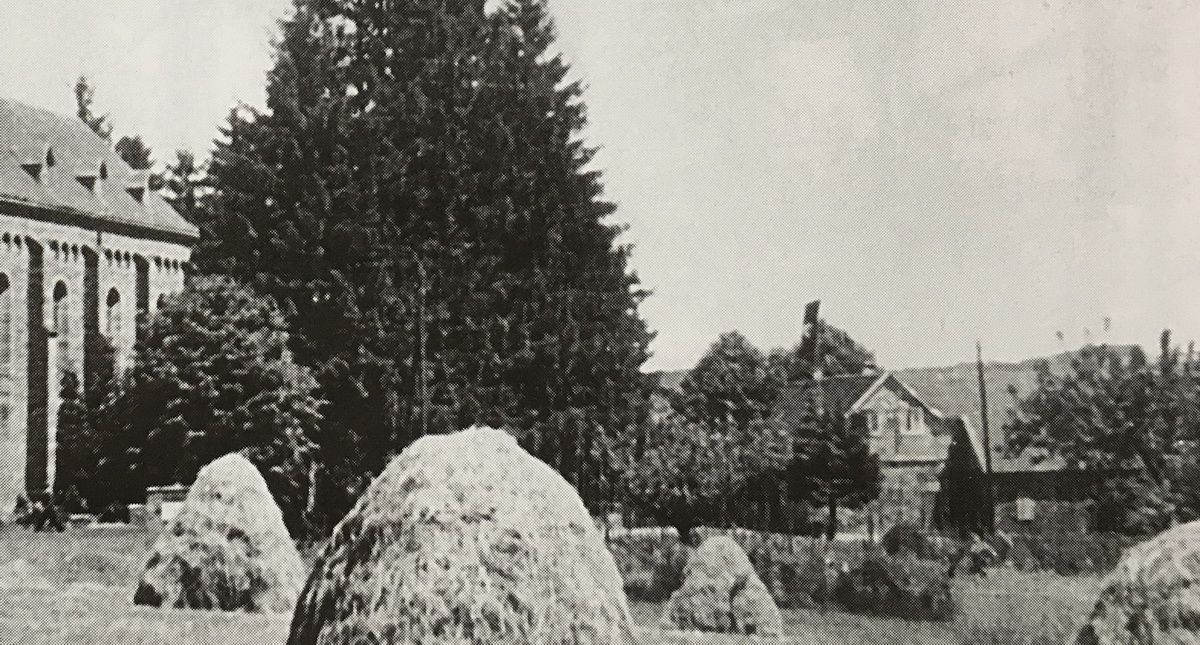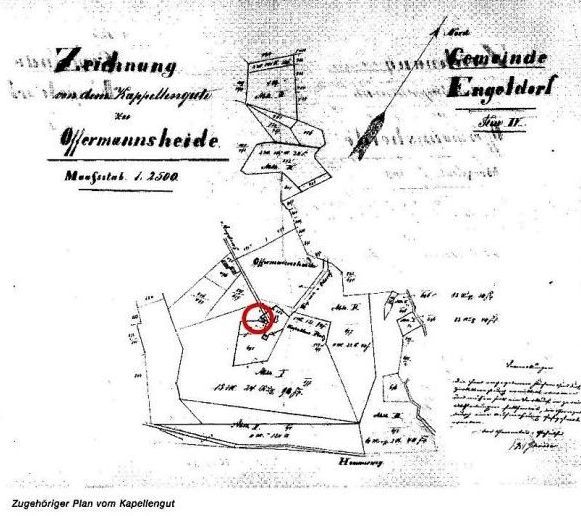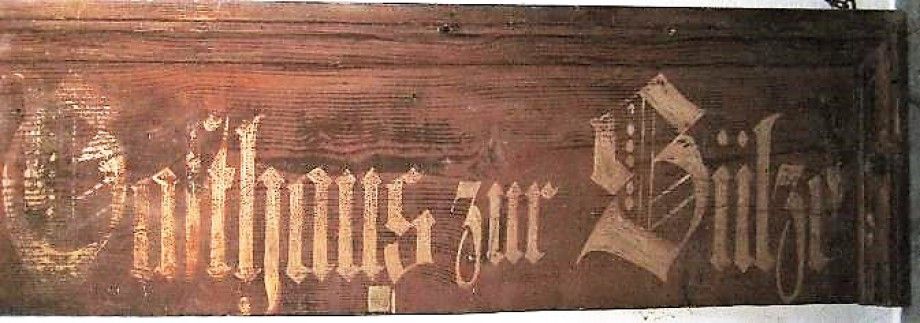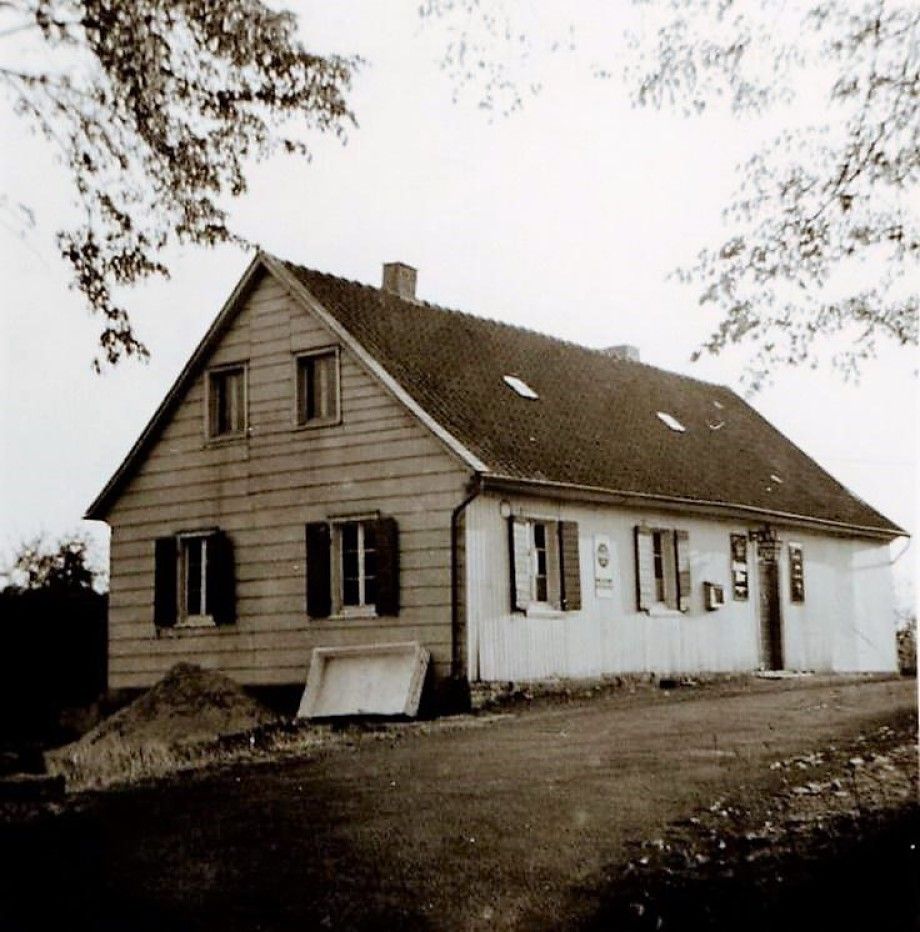Offermannsheide Chapel Estate
Walter Stefer
Version from December 2021
In addition to the fees for church services, the pastor in Kürten and the churchwardens received income from a farm, the "Kapellengut" in Offermannsheide, for the maintenance of the buildings. This estate was leased out. In 1582, the annual income is listed as 11 Oberland guilders (a Rhenish currency), "half of which is given to the pastor for the service and the other half to the churchwardens ad fabricam (for the church)". In 1616, on St. Peter's feast day (February 22), the "Kapellengut" is leased by the Kürten pastor Christian Jost to the married couple Berndt Schomecher and Druitchen von der Kolenbach. In this contract, it is expressly stated that the recipients of the lease money are obliged to maintain the chapel and the buildings belonging to the chapel estate together with the leaseholder. The tenant of the estate was also the sexton of the chapel. He had to keep it in order and perform the necessary services.
For a long time, the records only report on the estate indirectly. According to a survey from 1823, the estate consisted of a house with yard and garden of 1 acre (=2,556 square meters), 4 rods (1 rod = 14 square meters) of land, 22 acres, 10 rods of land, 112 rods of meadow and 19 acres, 99 rods of bush (forest). In 1828 it is pointed out "that the parish priest of Kürten has enjoyed half of the rental income from the estate for many years; this is proven by the available lease letters from 1730, 1752, 1760, 1790 and 1796."
Exactly 200 years after it was first mentioned, we hear about the Kapellengut again. In 1816, Pastor Zingsheim leases it to the farmer Wilhelm Fischer from Offermannsheide.
In 1859, the net yield of the "Ackergütchen, consisting of 12 mo(rgen) 144 ru(then) 20 F(uß) Flächenraum verschiedener Kulturart" is given as 25 Tlr. The differences in size are partly due to the fact that the forest is counted in one instance, but not in another.
The "Kapellengut" is mentioned again and again in the 19th century in connection with the Offermannsheiders' efforts to establish their own parish. When it came to the question of financing, the income from it was seen as the basis for the remuneration of a separate clergyman.
On February 20, 1867, the house and stables of the chapel property burned to the ground. After the church council of Kürten had declared in 1865 that "due to the low endowment of the Kürten parish, .... half of the rental income from the Offermannsheide chapel and parish property must remain inseparably with the income of the pastor in Kürten", this same pastor now had the property sold despite objections from a member of the church council and the Offermannsheide chapel congregation: For the price of 4010 Tlr.pr.C. (Prussian Courant), it was awarded to the farmer Johann Breidenbach zu Oeldorf, who bought it at auction for his father-in-law Wilhelm Krumbach, according to a notarial deed dated August 3, 1868. Ultimately, however, Christian Bosbach, Johann Breidenbach's son-in-law, moved into the estate after it was rebuilt (1884). He is named in a mortgage entry as the landlord of Offermannsheide.
On June 19, 1902, the estate finally became the property of Baroness von Fürstenberg-Heiligenhoven, later Baroness von Landsberg, in Georghausen for the purchase price of 20,500 marks. The Bosbach family moved to Biesfeld and Wilhelm Breidenbach leased the house from the von Landsberg family. Since then, the house with the restaurant sign (see below) "Gasthaus zur Sülze" was also popularly known as "Gasthaus Breidenbach".
After the death of innkeeper Wilhelm Breidenbach on September 12, 1918, his widow Anna continued to run the inn with her unmarried sons Rudolf (sexton, organist and choirmaster since 1934) and finally Viktor until her death in 1960.
As a village inn, it was mainly used by churchgoers for the Sunday morning pint and by local clubs for meetings and rehearsals, as well as by locals for their evening get-togethers over a schnapps or beer. As was often the case with landlords, farming continued as an additional source of income.
With the land register entry of March 26, 1968, the building with 1000 square meters of land was acquired by the married couple Wilhelm and Agatha Wurth, Welzen, from Zita Freifrau von Fürstenberg, née Freiin von Landsberg. Since then, the building has been used exclusively for residential purposes.
The history of the chapel estate ends with a rather inglorious phase
From 1927 to 1952, the estate was the subject of persistent negotiations and lawsuits between Baron von Landsberg and the parish, rigidly represented by the rector Adolf Hoffmann, because the latter assumed that it had been donated to the church as a so-called sexton's estate by the late Baroness von Landsberg. In 1926, however, she had only granted the church the use of the property.
Sources:
Förster, Kunibert: Offermannsheide - The village on the edge of the world - Kürtener Schriften,
Historical Society for the Municipality of Kürten and Surroundings, Issue 6 (2007)
Opladen, Prof. Dr. Peter: Das Dekanat Wipperfürth, published by F. Schmitt, Siegburg 1955
Engeländer, Hermann: Offermannsheide - a village chronicle November 1982. A century of the parish church of St. Peter and Paul 1883/1983. Chronicle of a parish".






